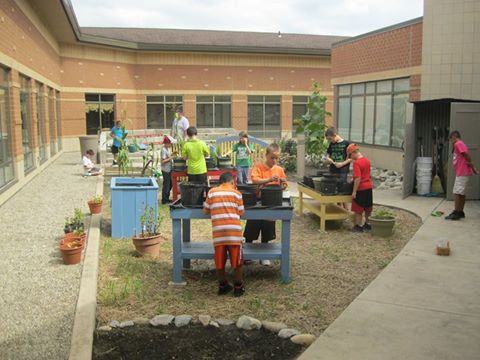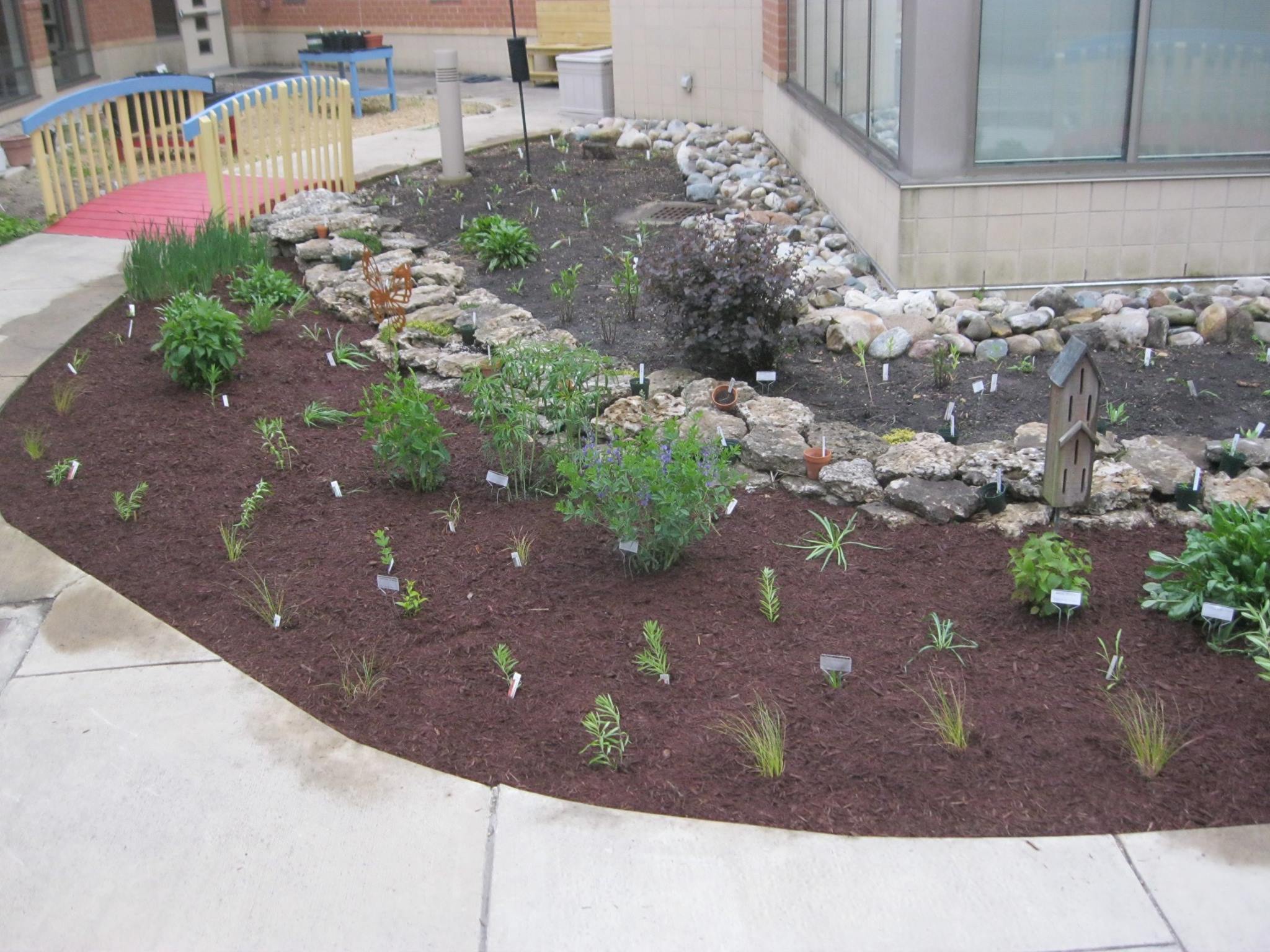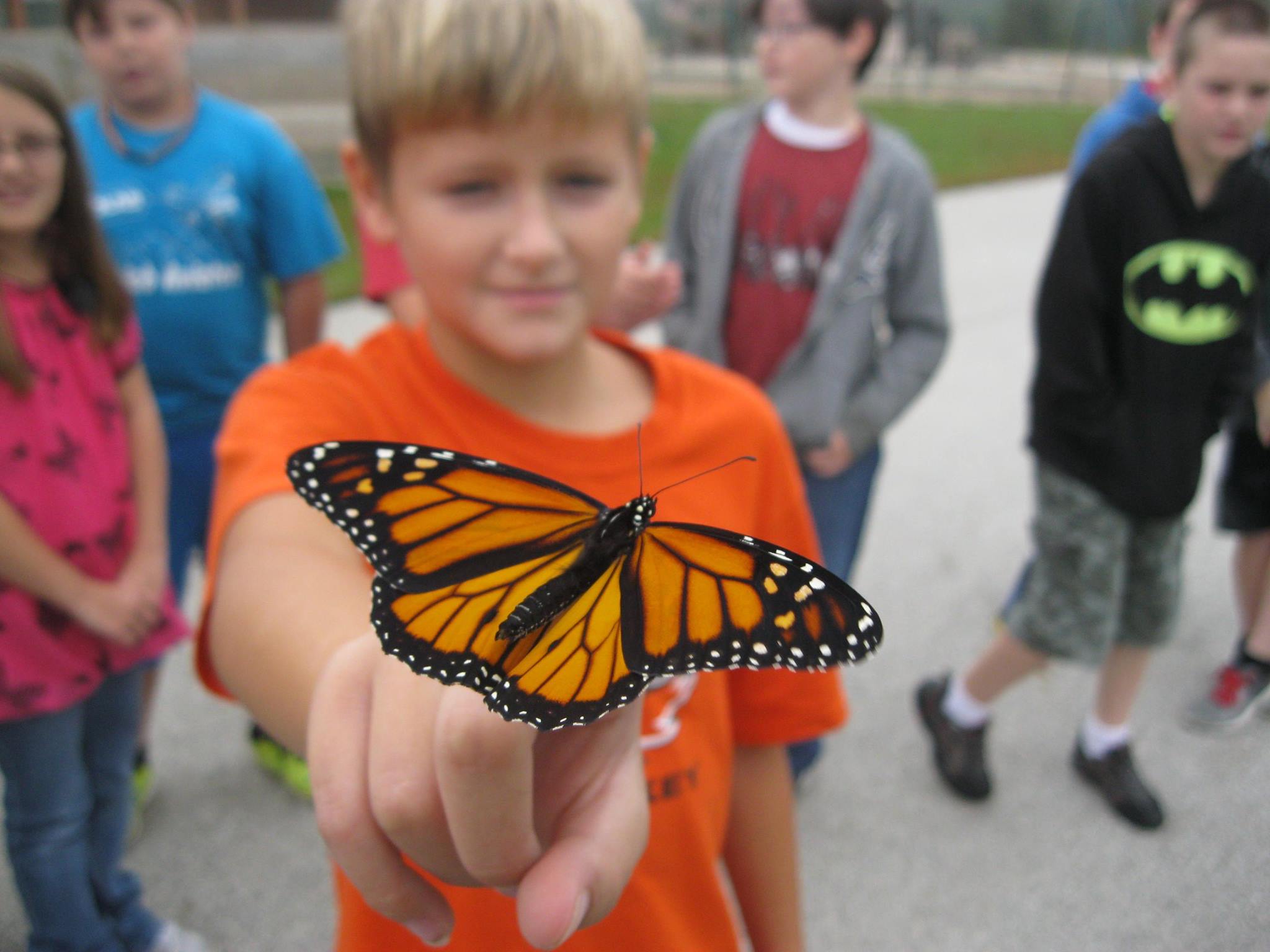Grants in Action: Flint Springs Garden & Nature Club
Blog
8 years ago

Three years ago, the outdoor courtyard at Flint Springs Elementary School had become overgrown and was in desperate need of some time and attention. Simultaneously, students wanted to start a school wide gardening project. That’s when fifth grade teacher John Stoffel had a big idea. After receiving permission from Flint Springs Principal Aimee Lunsford, Stoffel and his students took on the task of transforming the courtyard into an outdoor learning area housing both a traditional vegetable garden and a native Indiana flower garden.
After receiving their first Foundation Classroom Education grant in the fall of 2014, the Flint Springs Garden & Nature Club got to work. Teaming up with our local Ace Hardware, the Club was able to secure garden hoses, work gloves, shovels, spades, rakes, hoes, pruners, brooms, a wheelbarrow, and a rain barrel all within their $750 grant budget. With the necessary tools in hand, the Club started the process of pulling weeds, removing rock, bringing in topsoil, and planting several fall vegetables in the spring of 2015. They also went on regular hands-on nature hikes to the woods and marshland behind the school finding frogs, snakes, and native Indiana plants.
At the same time, another big project was underway. The courtyard and 1,000 square feet of ground next to the playground was being primed to become a certified Monarch Waystation under the Monarch Watch conservation program at Kansas University. These areas needed various milkweed varieties to attract monarch caterpillars and native flowers for the adult butterflies. After receiving certification, students began to collect caterpillars during Club and even during their own recess time. In 2015, forty-two caterpillars were harvested, reared inside classrooms, the library, and the main office and released back into nature.

During that same semester in 2015, the Club received their second Foundation Classroom Education grant to meet two objectives: finish off the native Indiana flower garden in the courtyard and provide butterfly specific mesh cages for each classroom.
After the success of establishing container gardening tables and vegetable plots, the Club tackled the native Indiana flower garden. In May of 2016, Martha Ferguson of Riverview Nursery in Spencerville, IN delivered the plants and stuck around to help the Club members plant them properly. The garden was specifically designed with plants that bloom during the school season and that attract wildlife such as hummingbirds and butterflies.
The purchase of better quality mesh cages allowed each classroom to have a greater chance of success when rearing their caterpillars. Club members were the primary caretakers of each classroom caterpillar, collecting fresh milkweed, sanitizing cages, and replacing any old milkweed. Members also collected data on each caterpillar in order to come up with best practices for future rearing. Students thought up with different hypotheses and analyzed the data using a variety of graphs. In total, sixty-seven monarch butterflies were released in 2016.

We think Stoffel said it best in a recent HCCSC newsletter by saying, “I hope students continue to be aware of their surroundings, ask questions, do research, and choose to take care of some part of their community, be it a caterpillar, a piece of the earth, or a neighbor.”
Support projects like this by becoming a Community Impact partner today!
You May Be Interested In:

Big Plans Ahead: 2025 Grant Cycle I Recipients Revealed
6 days ago by Adrianna Town

Seven Local Projects Receive Accessibility Grants
2 months ago by Adrianna Town

Beyond the Books: Andrews-Dallas Township Public Library Fosters Quality of Place
3 months ago by Adrianna Town

Community Foundation Awards Seventeen Classroom Education Grants
4 months ago by Adrianna Town